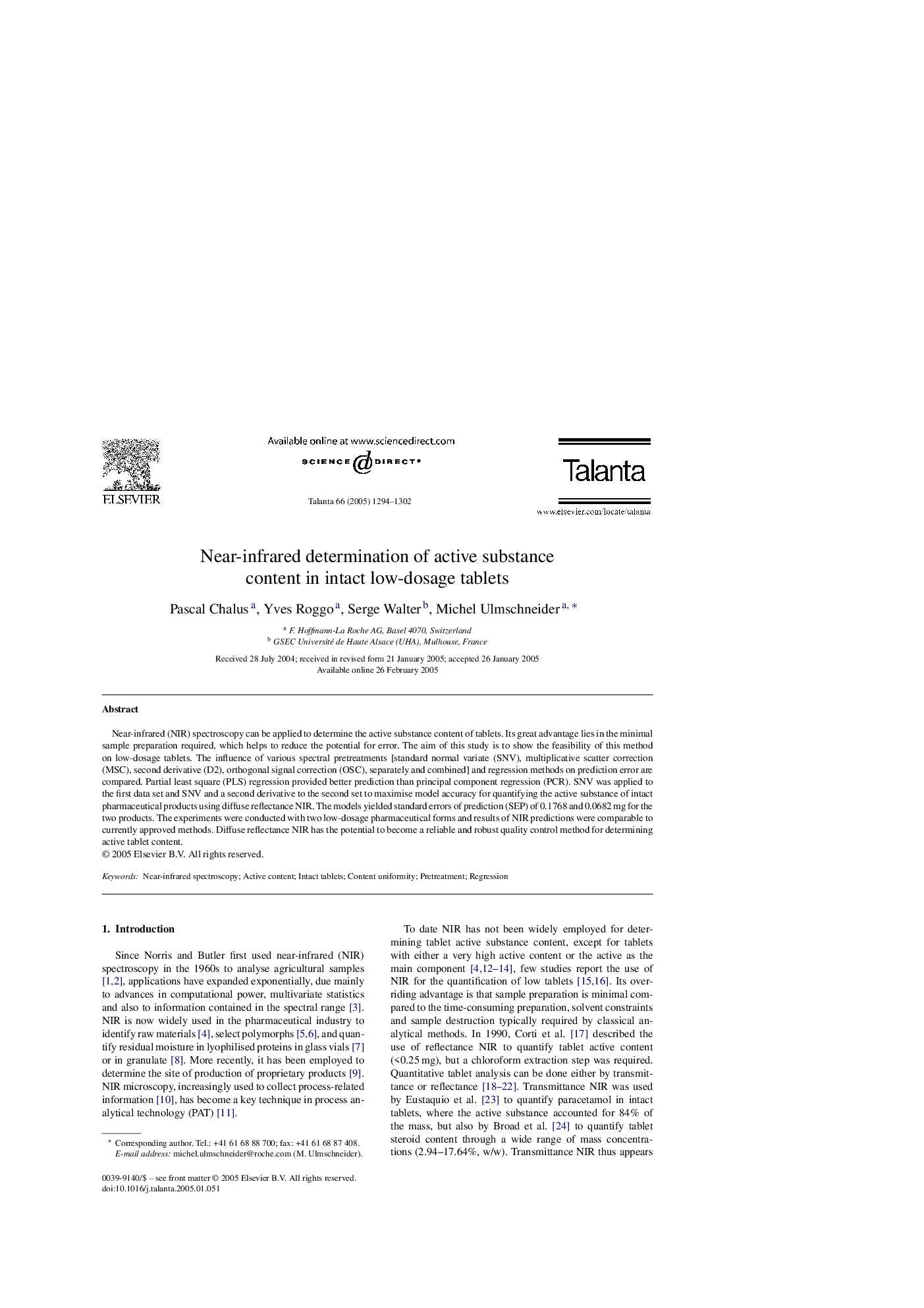| Article ID | Journal | Published Year | Pages | File Type |
|---|---|---|---|---|
| 10561225 | Talanta | 2005 | 9 Pages |
Abstract
Near-infrared (NIR) spectroscopy can be applied to determine the active substance content of tablets. Its great advantage lies in the minimal sample preparation required, which helps to reduce the potential for error. The aim of this study is to show the feasibility of this method on low-dosage tablets. The influence of various spectral pretreatments [standard normal variate (SNV), multiplicative scatter correction (MSC), second derivative (D2), orthogonal signal correction (OSC), separately and combined] and regression methods on prediction error are compared. Partial least square (PLS) regression provided better prediction than principal component regression (PCR). SNV was applied to the first data set and SNV and a second derivative to the second set to maximise model accuracy for quantifying the active substance of intact pharmaceutical products using diffuse reflectance NIR. The models yielded standard errors of prediction (SEP) of 0.1768 and 0.0682Â mg for the two products. The experiments were conducted with two low-dosage pharmaceutical forms and results of NIR predictions were comparable to currently approved methods. Diffuse reflectance NIR has the potential to become a reliable and robust quality control method for determining active tablet content.
Related Topics
Physical Sciences and Engineering
Chemistry
Analytical Chemistry
Authors
Pascal Chalus, Yves Roggo, Serge Walter, Michel Ulmschneider,
